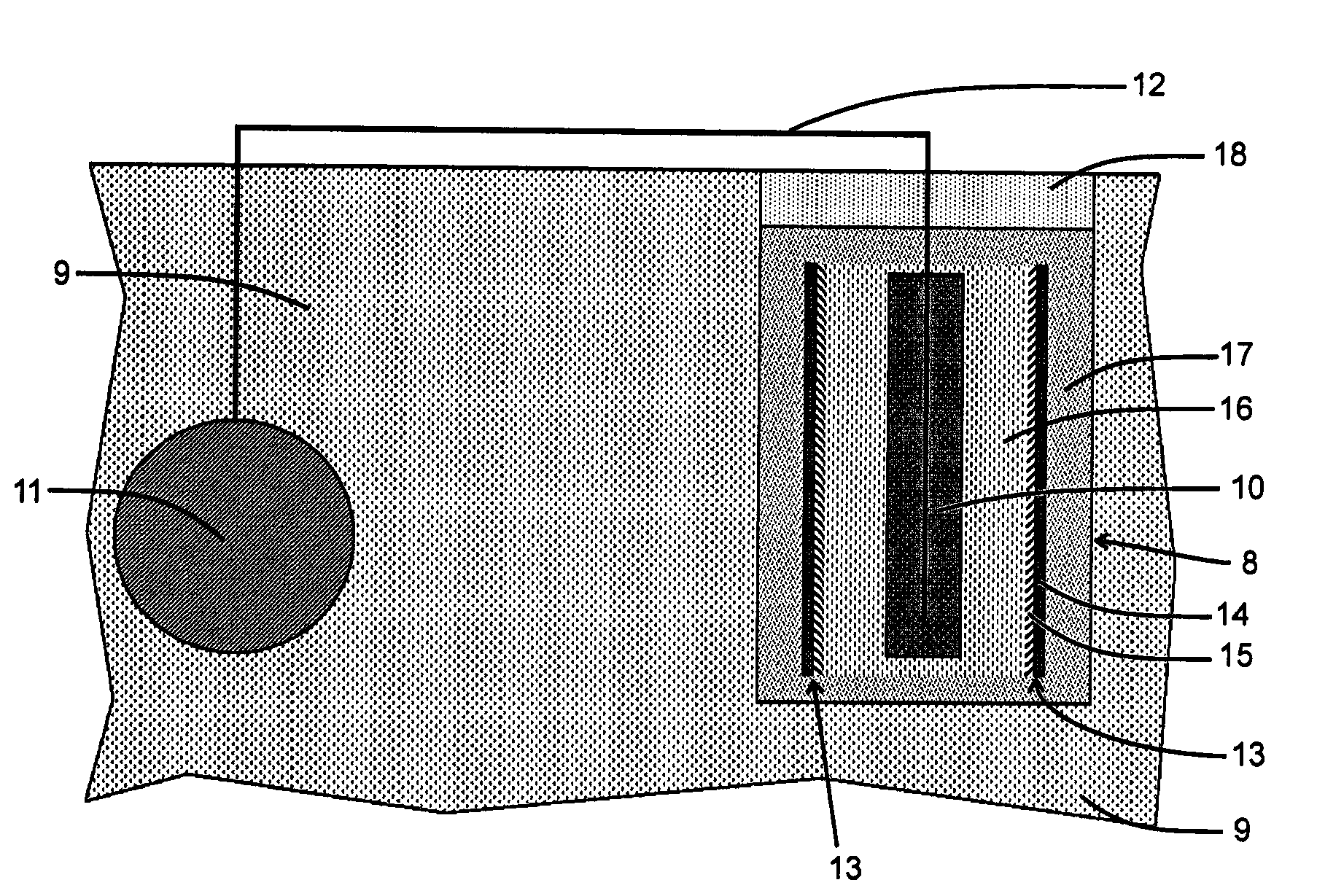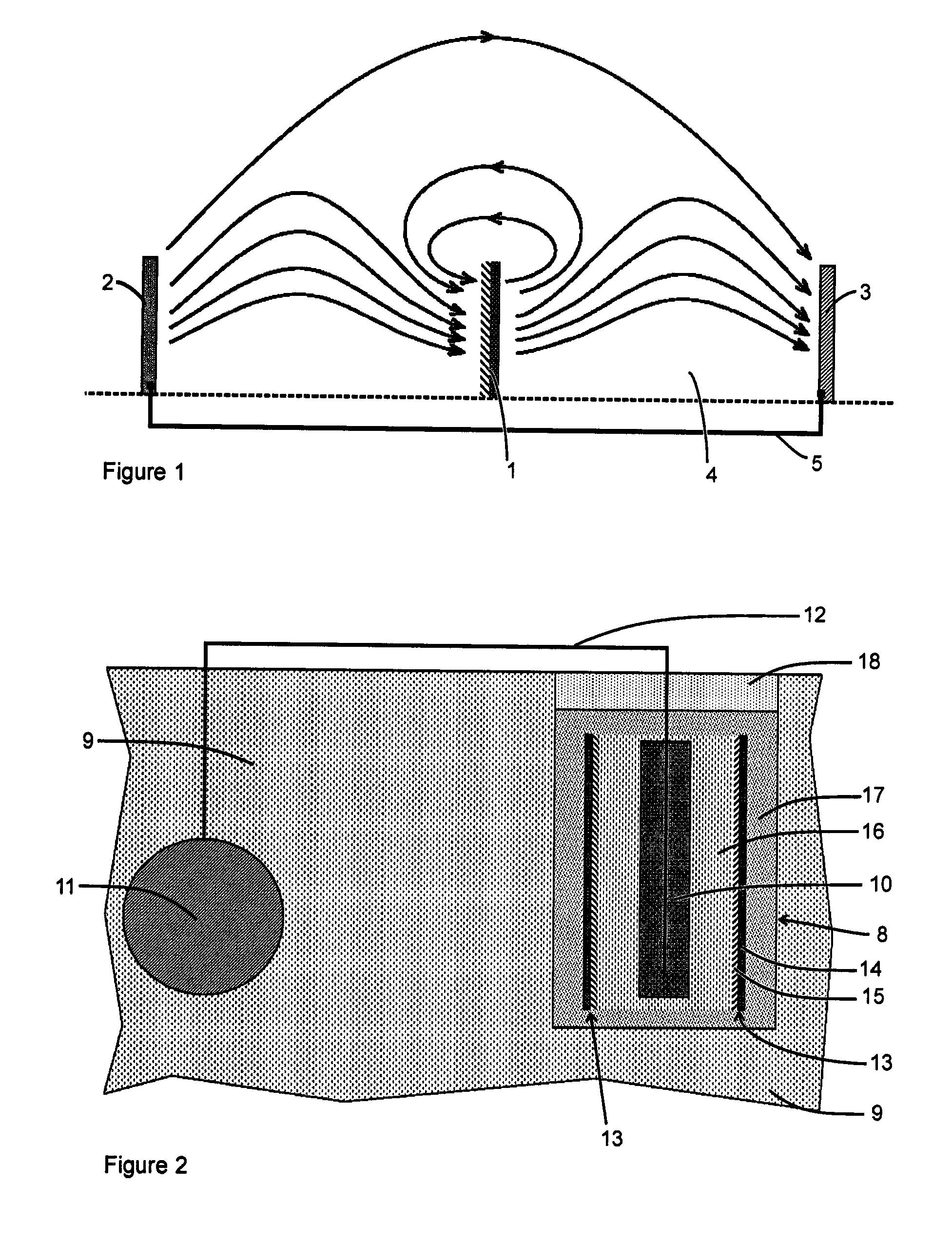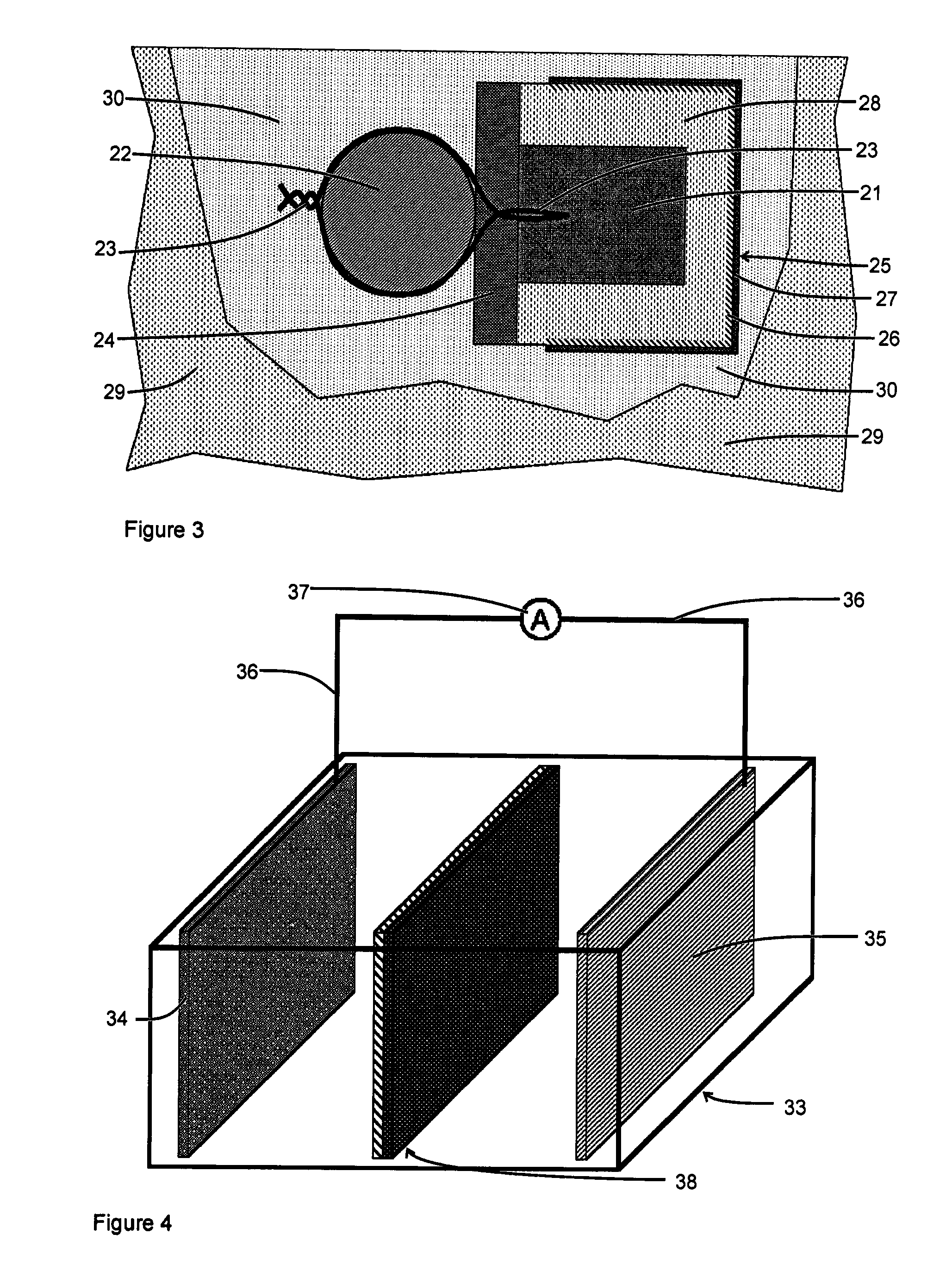Corrosion protection of steel in concrete
a technology of concrete and corrosion protection, applied in the field of electrochemical protection of steel in reinforced concrete, can solve the problems of inability of air cathode in anode assembly to deliver the necessary protective current, and the inability of air cathode in the anode assembly to work, so as to prolong the shelf life of the modifier
- Summary
- Abstract
- Description
- Claims
- Application Information
AI Technical Summary
Benefits of technology
Problems solved by technology
Method used
Image
Examples
example 1
[0061]An electric field modifier was constructed using a zinc casing of a standard zinc chloride D size cell (also referred to as a zinc-carbon battery with the International Electrotechnical Commission classification of R20). A sheet of zinc was cut from the casing and flattened and sanded to clean any deposit(s) from the zinc. It measured approximately 55×100 mm. One side of the zinc sheet was coated with two coats of an electrically conductive silver paint, of the type used to make electrical connections on circuit boards. The sheet was then baked at 240° C. for 15 minutes to remove the coating solvent. Carbon was then rubbed onto the silvered surface to produce a loose thin grey coating. Any coating on the reverse side of the zinc sheet was removed using a 220 grit sandpaper to leave a clean, bright zinc surface. The silver and carbon surface is designed to act as an air electrode (i.e., the cathode) and facilitate reduction of the oxidizing agent, e.g., oxygen, while the zinc s...
example 2
[0069]Two electric field modifiers of approximately 55×50 mm in size were constructed using the same zinc sheet, as described in Example 1. One side of each zinc sheet was first coated with two coats of silver paint and then baked, as described in Example 1. Thus one side of each sheet was zinc and the other side was a conductive silver coating. The silver coated surface was then coated with a carbon rich paint. Two make the carbon paint, the carbon bar from the center of a zinc-carbon battery was sanded down to produce a fine carbon powder. The power was mixed with a drop of clear outdoor varnish and approximately 10 times as much varnish solvent thinner. A carbon to binder ratio, in the dry paint film of somewhat greater than 10:1, was targeted. The painted zinc sheet was then baked further to remove the solvent. The conductivity of the painted surface was checked using a resistance meter with two probes which were lightly pressed onto the carbon coated surface. The resistivity wa...
example 3
[0075]FIG. 8 shows the test arrangement for Example 3. According to this embodiment, two cement mortar blocks 41, each 270 mm long by 175 mm wide by 110 mm high, were cast using damp sand, Portland Cement® and water in the weight ratio 4:1:0.8. The mortar was of a relatively poor quality and some bleed water formed on top of the casting. During the casting process, a steel cathode 42, with a surface area of 0.12 m2, was positioned within the outer edge of each mortar block. The steel cathode 42 was formed from two 300 mm by 100 mm steel shims that were cut and folded to form a set of 20 mm wide by 90 mm long steel strips connected by a 10 mm by 300 mm strip, to allow both sides of the steel to receive current during the testing process. A segment of the cut and folded steel cathode 42 is shown in FIG. 9. An electric cable 43 was connected to the steel cathode 42 and extended beyond the cement mortar 41 to enable electrical connections to be made to the steel cathode 42. A hole 44, 4...
PUM
| Property | Measurement | Unit |
|---|---|---|
| diameter | aaaaa | aaaaa |
| voltage | aaaaa | aaaaa |
| current density | aaaaa | aaaaa |
Abstract
Description
Claims
Application Information
 Login to View More
Login to View More - R&D
- Intellectual Property
- Life Sciences
- Materials
- Tech Scout
- Unparalleled Data Quality
- Higher Quality Content
- 60% Fewer Hallucinations
Browse by: Latest US Patents, China's latest patents, Technical Efficacy Thesaurus, Application Domain, Technology Topic, Popular Technical Reports.
© 2025 PatSnap. All rights reserved.Legal|Privacy policy|Modern Slavery Act Transparency Statement|Sitemap|About US| Contact US: help@patsnap.com



